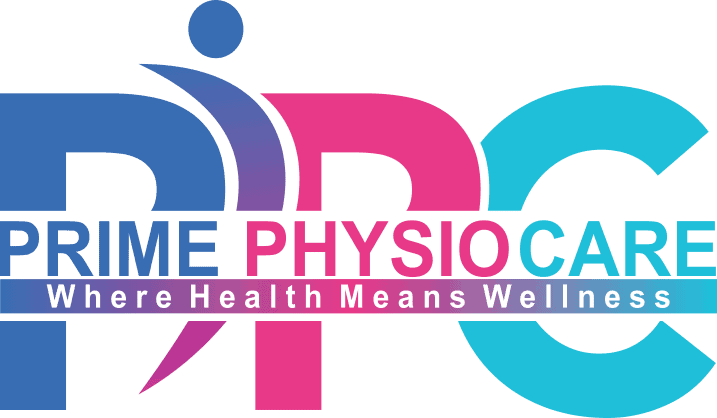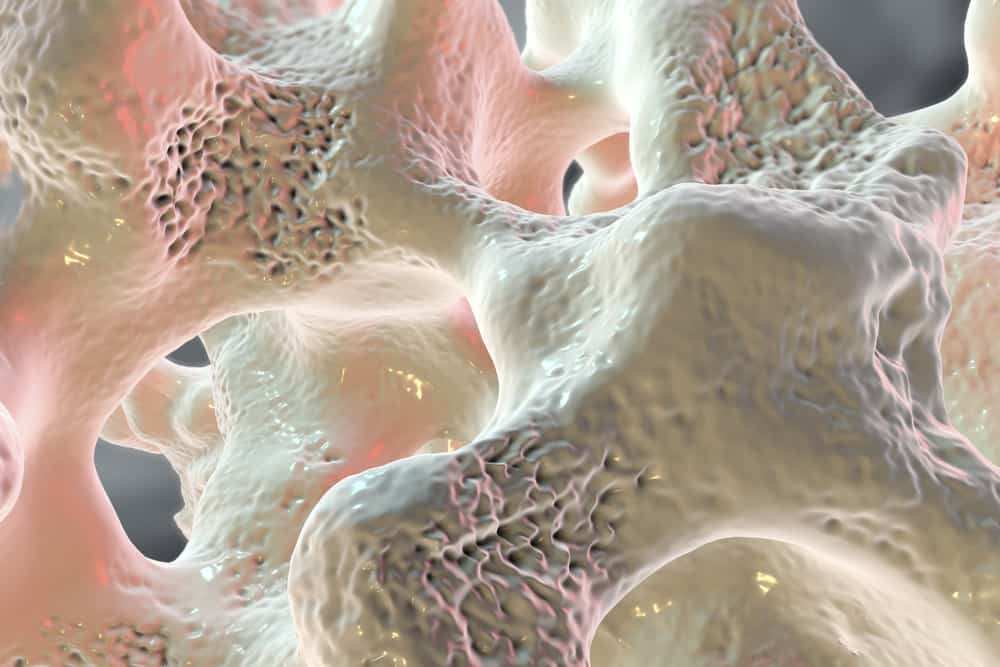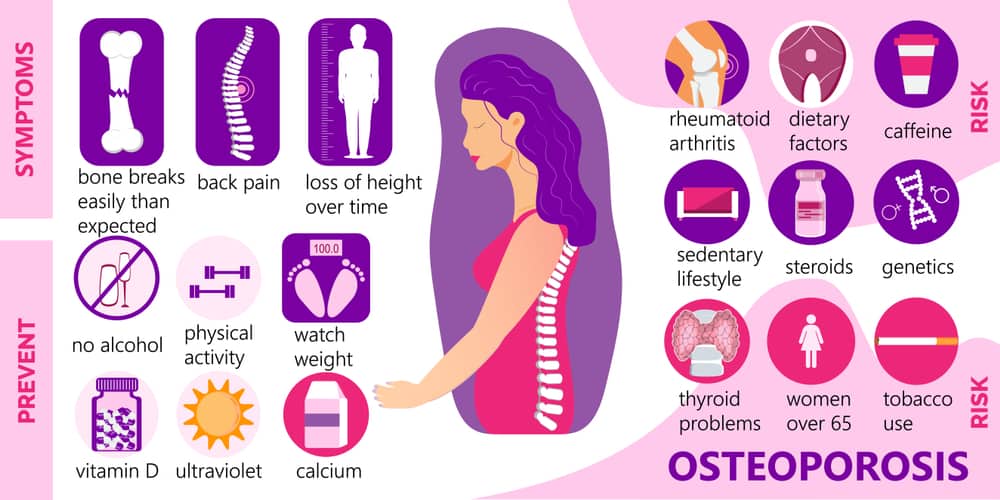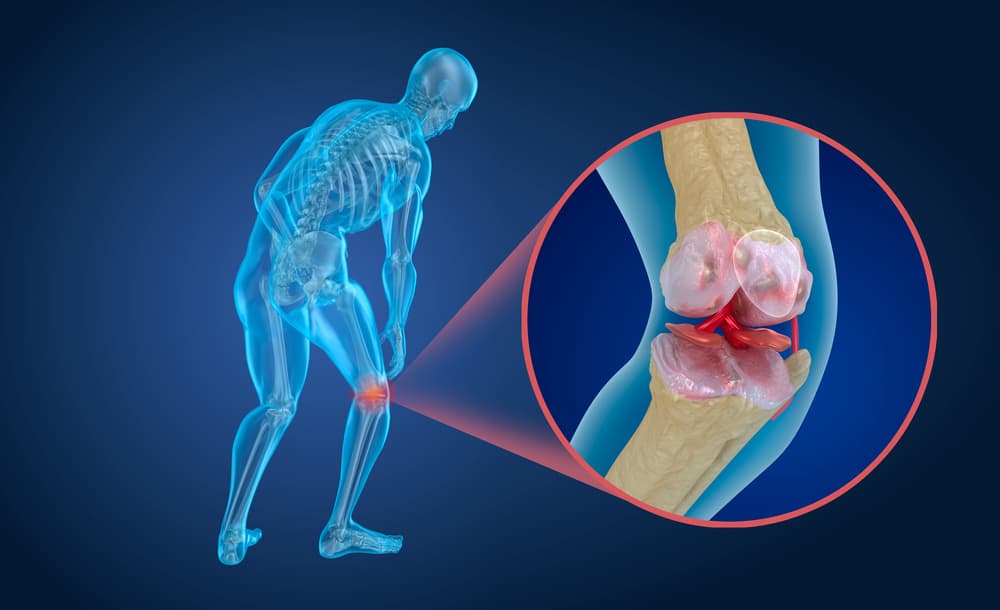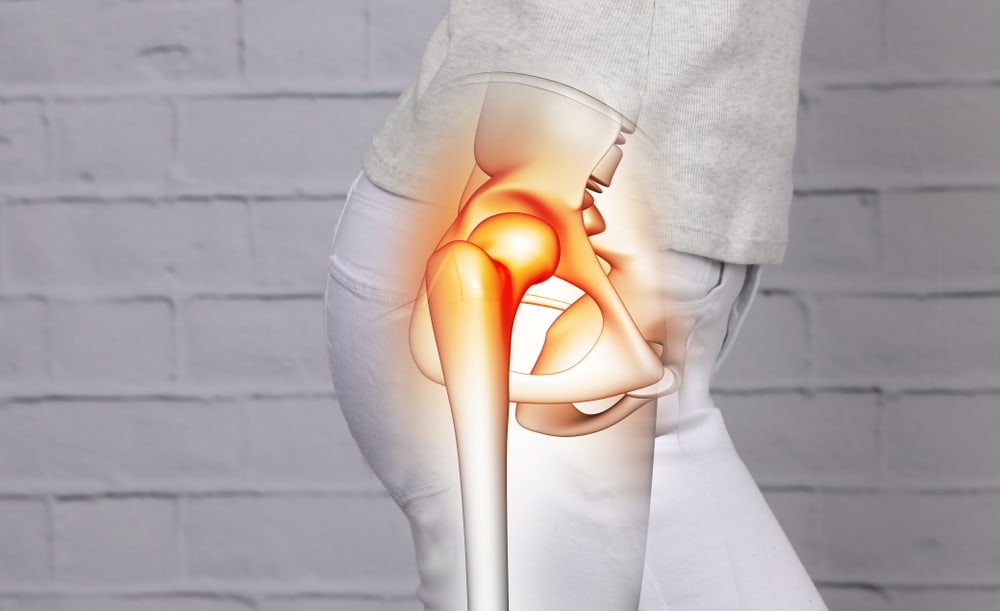Individualized Osteoporosis Treatment Plan: What You Need to Know?
If you have been told that you have Osteoporosis, the next step in your therapy is to develop an individualized osteoporosis treatment plan. Osteoporosis is a disease that makes bones less intense and more likely to break. When creating a treatment plan, many factors, such as your age, health history, and lifestyle habits, must be considered.
This blog article will provide information on what you need to know to manage your condition, explore the many parts that make up an osteoporosis treatment plan and provide a breakdown of those parts.
Individualized Osteoporosis Treatment plan
The first step in creating an individualized osteoporosis treatment plan is to have a complete checkup with your doctor. Your physician will recommend you the next step of treatment and will be able to assess your risk factors. Your family physician could also suggest you see a specialist, such as an endocrinologist or rheumatologist, for more assistance.
The following steps are crucial in an osteoporosis Treatment Plan:
Test and scans:
Once you have met with your doctor, they will likely order some tests, such as bone density or blood work. These tests will help them determine your condition’s severity and recommend how to treat it best.
Medications:
Medications, adjustments to one’s lifestyle, and dietary supplements are just some of the many approaches that are taken to treat Osteoporosis. The use of drug therapy, which is the primary treatment method for Osteoporosis, is often suggested for more severe instances. Certain medications can both reduce the rate of bone loss and stimulate bone growth.
There are different pharmaceutical options available for the treatment or prevention of Osteoporosis. Your physician may recommend the following medications, depending on the condition causing your bone loss.
Medications that are commonly prescribed for Osteoporosis include bisphosphonates and denosumab.
- Bisphosphonates are used for Osteoporosis. It can treat your problem by slowing down the rate at which bone is broken down.
- Denosumab is a newer medication that works by stopping the cells that break down bone from doing their job.
Lifestyle Changes:
Lifestyle changes that can help to improve Osteoporosis include quitting smoking, getting enough calcium and vitamin D, and exercising regularly.
Having adequate calcium and vitamin D is critical because both contribute to maintaining healthy and robust bones.
You can gain calcium, a mineral, by consuming foods like milk and yogurt, as well as the consumption of dark green and leafy plants. Vitamin D is found in fortified foods like milk, orange juice, and fatty fish like salmon.
Exercise
Exercising regularly is also essential because it helps to strengthen bones and muscles.
Exercise That You Might Want To Avoid A lot
If you have Osteoporosis, you should exercise, but you shouldn’t put any sudden or undue strain on your bones because this can worsen your condition. If you have Osteoporosis, your doctor would probably tell you to steer clear of certain sorts of workouts, like the ones listed here:
- Avoid doing heavy exercises because, in osteoporosis, you have weaker bones.
- If you have Osteoporosis, activities that require bending and turning or twisting, such as sitting up straight or touching your toes, can increase the likelihood of a compression fracture.
Supplements that may be recommended for Osteoporosis include calcium, vitamin D, and magnesium. These supplements can help to improve bone health and reduce the risk of fractures.
If you have been diagnosed with Osteoporosis, creating an individualized treatment plan is essential. This plan should concern your doctor and consider your age, health history, and lifestyle habits. Medications, lifestyle changes, and supplements can all help manage Osteoporosis.
The following steps Should be Taken :
- Quit smoking
- Get enough calcium and vitamin D
- Exercise regularly
- Take supplements as recommended by your doctor.
- Calcium, vitamin D, and magnesium are often recommended.
Calcium is present in foods like milk and yogurt, as well as in vegetables with leafy greens.
Vitamin D is found in fortified foods like milk, orange juice, and fatty fish like salmon.
Exercising regularly is also essential because it helps to strengthen bones and muscles.
Osteoporosis management
Osteoporosis can affect people at all stages of life, especially in old age. There is no specific cure to treat Osteoporosis, but you can take certain steps to prevent it. And if you are struggling with Osteoporosis, you can efficiently manage the condition to feel better.
An individualized osteoporosis treatment plan is always recommended for osteoporosis management. You can have this individualized osteoporosis plan from your doctor.
Risk Factors Of Getting Osteoporosis
First, identify your risk for osteoporosis and spine fractures. Men and women might develop Osteoporosis due to physical and lifestyle factors. These risk factors create a high chance of developing Osteoporosis.
Osteoporosis risks include:
-
Elderly
People with age Over-65s are at risk. When you age, your body gets weaker and more prone to diseases. That’s why people of old age are at more risk of Osteoporosis too.
-
Gender
Menopause causes women to lose bone faster than males. 20% of osteoporosis patients are men. Women have more calcium and vitamin D deficiency due to many factors such as childbirth or menopause, leading to osteoporosis, especially at old age.
-
Family lore
Some diseases are just hereditary, and you cannot do anything to prevent them. Similarly, Osteoporosis can also develop due to family history. This includes Osteoporosis in the family, fractures on the mother’s side, and adult bone fractures (after age 50).
-
Race
Caucasian and Asian women are vulnerable. These Races of people are more prevalent to get Osteoporosis in their life.
-
Typology
Women under 127 pounds are weak, and they are in increased danger. Having less weight can make their women weaker, and they may also have a calcium deficiency.
-
Menstruation or menopause
Normal menopause raises osteoporosis risk. Early menopause or menstrual cessation increases the risk.
-
(Males) Hypogonadism
This is testosterone deficiency which leads to Osteoporosis. Testosterone is a male hormone, and its deficiency can lead to Osteoporosis in men.
-
Lifestyle
An unhealthy lifestyle pattern can cause Osteoporosis due to a lack of activity and deficiency of specific vitamins.
Weight-bearing exercises for Osteoporosis of the spine
Weight-bearing exercises are an essential part of osteoporosis management. These exercises help strengthen bones and reduce the risk of fractures. Many different exercises can be beneficial for people with Osteoporosis, and the best type of exercise will vary from person to person.
Your physician can evaluate your unique requirements and make recommendations on the types of exercises that are ideal for you to perform. Generally, low-impact weight-bearing exercises that put minimal joint stress are ideal for people with Osteoporosis. Tai Chi, walking, and elliptical training are a few workouts that fall under this category.
It is good to discuss the matter with your primary care physician before beginning a new exercise, as some types of physical activity may not be suitable for those who have Osteoporosis.
In addition, it is essential to warm up before exercising and to cool down afterward. Exercising regularly is vital to managing Osteoporosis and maintaining good bone health.
Osteoporosis monitoring
An Individualized Osteoporosis Treatment Plan can be helpful for treating osteoporosis. Osteoporosis monitoring is an essential part of managing the condition. It helps to track your progress and identify any changes in your symptoms.
There are many different ways to monitor these are given in detail below.
Individualized osteoporosis management, also called IOM, is a process of developing a plan for Osteoporosis management tailored to each person’s needs. This type of management generally includes a combination of lifestyle changes, medications, supplements, and close monitoring by a healthcare team.
IOM typically begins with a thorough evaluation, including a bone density test, blood work, and other tests to assess your risk factors. Based on these results, your doctor will develop a treatment plan that is right for you.
Lifestyle changes play a crucial role in Individualized Osteoporosis Management. Quitting smoking, getting enough calcium and vitamin D, and exercising regularly are all essential steps that can help to improve your bone health.
Bisphosphonates, denosumab, and various other drugs are used for the treatment. These medications can help to slow down bone loss and reduce the risk of fractures.
( repetition )
Bone Density Test
Bone density testing is a vital part of the prevention process for osteoporosis and spine fractures. The most reliable method for identifying Osteoporosis is a bone density test (also known as a bone mineral density test or BMD test). Rapid and painless, the examination assesses bone mass, typically in the hip and lumbar spine.
A bone density test is advised in the following scenarios, per the National Osteoporosis Foundation and the United States Preventive Service Task Force:
- The 65-and-up ladies
- Women under 65 who are postmenopausal and at risk for a variety of complications
- If you’re not sure if you want to use hormone replacement therapy after you reach menopause,
- X-rays of the spine show abnormalities
- Use of oral steroid medication for an extended period
- Hyperparathyroidism (overactive parathyroid gland
Degenerative osteoporosis treatment
Degenerative Osteoporosis is a type of Osteoporosis that occurs when the body breaks down bone faster than it can be replaced. Many degenerative osteoporosis treatment options are available, and the best course of action will vary from person to person.
Medications commonly used to treat this type of Osteoporosis include bisphosphonates, denosumab, and various other drugs.
These medications can help to slow down bone loss and reduce the risk of fractures. In addition to medication, lifestyle changes such as quitting smoking, getting enough calcium and vitamin D,
Treatment for Osteoporosis of the spine
Osteoporosis of the spine is a condition that can cause the spine’s bones to weaken and break down. This can lead to pain, deformity, and an increased risk of fractures. There are many different treatment options available for Osteoporosis of the spine,
Medications commonly used to treat this type of Osteoporosis include bisphosphonates, denosumab, and various other drugs. These medications can help to slow down bone loss and reduce the risk of fractures. In addition to medication, lifestyle changes such as quitting smoking, getting enough calcium and vitamin D,
Back Brace for Osteoporosis Review
A back brace is a standard treatment option for Osteoporosis of the spine. Many different braces are available, and the best one for you will depend on your individual needs. Some braces are designed to provide support and stabilization, while others are intended to help improve posture.
The best treatment plan for Osteoporosis of the spine will be an individualized treatment plan based on your specific needs.
Calcium and vitamin D recommendations for Osteoporosis
People with Osteoporosis often need to take supplements of these nutrients to maintain good bone health. The best way to get calcium and vitamin D is through diet and exposure to sunlight. However, people with Osteoporosis may not be able to get enough of these nutrients through diet alone. This may involve taking supplements, getting more sunlight, or changing your diet. Following your doctor’s recommendations is essential to maintain good bone health. (repitition)
What is the recommended dose of calcium for Osteoporosis?
The recommended dose of calcium for Osteoporosis is 1,000 mg per day. This can be taken in the form of supplements or through diet. Speaking with your doctor before starting any new supplement regimen is essential, as too much calcium can be harmful.
What is the recommended dose of vitamin d for Osteoporosis?
The recommended dose of vitamin D for Osteoporosis is 800 IU per day. This can be taken in the form of supplements or through exposure to sunlight. Speaking with your doctor before starting any new supplement regimen is essential, as too much vitamin D can be harmful.
People with Osteoporosis should get calcium and vitamin d recommendations from their doctor to maintain good bone health. The best way to get calcium and vitamin D is through diet and exposure to sunlight. However, people with Osteoporosis may not be able to get enough of these nutrients through diet alone. This may involve taking supplements, getting more sunlight, or changing your diet. Following your doctor’s recommendations is essential to maintain good bone health.
Conclusion
Osteoporosis is a disease that impacts the lives of millions of people all over the world. It is a condition that causes the bones to become weak and brittle and can lead to serious health complications. Although Osteoporosis has no known cure, some medications can help patients manage the condition and its symptoms.
Suppose you have Osteoporosis to speak with your doctor and develop an individualized osteoporosis treatment plan. This plan may include taking medications, making lifestyle changes, and getting enough calcium and vitamin D.
How can you book an appointment?
We aim to see you within 24 hours so contact us to make an appointment either online at www.primphysiocare.co.uk or to find out more information on how we can help you, please call us on 07515280990 or email us primephysiocareluton@gmail.com. We are one of the best clinics whose physios are registered with HCPC, CSP and Physio first as well have enormous experience.
Frequently asked questions
Q: What is an individualized osteoporosis treatment plan?
Ans. An individualized osteoporosis treatment plan is a plan that is specifically tailored to your needs and situation. When developing your plan, factors that will be considered include age, gender, menopausal status, bone density test results, and medical history.
Q: What is the recommended dose of calcium for Osteoporosis?
Ans: The recommended dose of calcium for Osteoporosis is 1,000 mg daily. This can be taken in the form of supplements or through diet. Speaking with your doctor before starting any new supplement regimen is essential, as too much calcium can be harmful.
Q: What is the recommended dose of vitamin d for Osteoporosis?
Ans: The recommended dose of vitamin D for Osteoporosis is 800 IU per day. You can take this in the form of supplements or through exposure to sunlight. Speaking with your doctor before starting any new supplement regimen is essential, as too much vitamin D can be harmful.
Q: What are the best treatments for Osteoporosis of the spine?
Ans: The best treatments for Osteoporosis of the spine vary from person to person. Treatment options may include taking medications, making lifestyle changes, and getting enough calcium and vitamin D. You can have an individualized osteoporosis treatment plan to treat Osteoporosis.
Q: How can I prevent Osteoporosis?
Ans: The best way to prevent Osteoporosis is to get enough calcium and vitamin D. This can be done through diet, sunlight, and supplements. It is also essential to avoid smoking and alcohol consumption, as these habits can increase your risk of developing Osteoporosis.
Q: Which thing should we avoid while having Osteoporosis?
Ans. If you have osteoporosis, you should avoid heavy exercises, which can stress your muscles. Heavy exercise can damage your bones and cause fractures.
